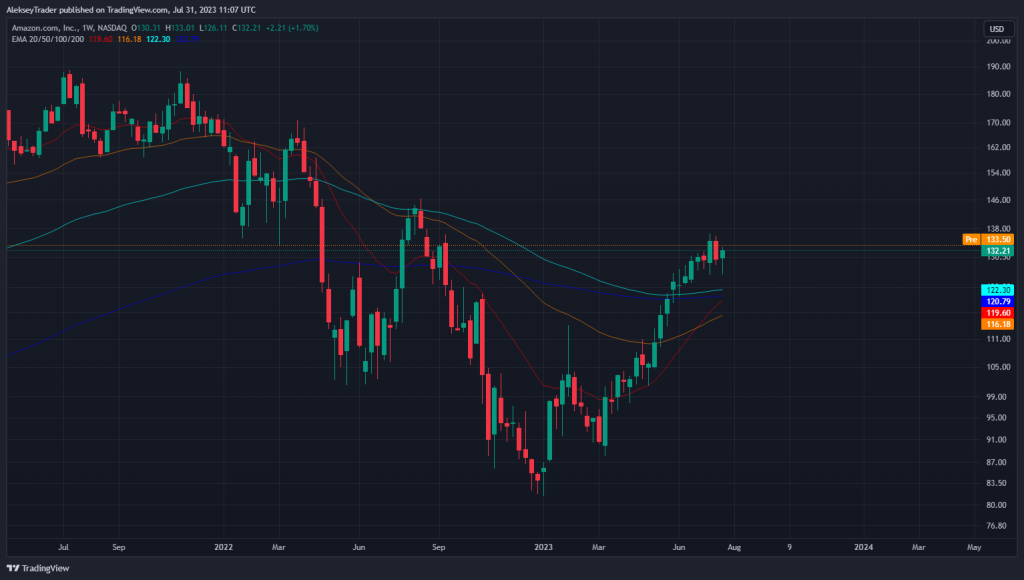
Amazon (NASDAQ:AMZN) investors are eagerly seeking updates on several aspects of the tech giant’s business, particularly its cloud services, advertising revenue growth, and consumer outlook for the upcoming holiday season. The impact of inflation on spending for both corporations and consumers has heightened the interest in these areas.
Regarding Amazon Web Services (AWS), the company’s cloud division, investors are keen to see how it stacks up against competitors like Microsoft (NASDAQ:MSFT) and Google (NASDAQ:GOOGL), both of which reported slower growth in their cloud businesses for the quarter ending June 30. Amazon had previously mentioned a decrease in AWS growth as business clients shifted their spending to cut costs.
Experts, like Tom Forte, a senior research analyst at financial firm D.A. Davidson Companies, believe that cloud computing, including Microsoft’s Azure, Google Cloud, and AWS, could benefit from companies interested in artificial intelligence. However, the overall consumer spending pullback may cause companies invested in AI and cloud tools to reassess their expenses, which could impact cloud computing growth.
Amazon’s advertising business is also a point of interest for investors. They are interested in how it intersects with language models and generative AI. The company’s advertising business had shown “robust growth” thanks to machine learning investment, as mentioned by Chief Executive Andy Jassy in the first-quarter earnings call. Investors will compare Amazon’s ad business with Google, which reported a 3.3% increase in advertising revenue to $58.1 billion despite a broader advertising pullback.
In terms of the retail front, investors are curious about Amazon’s strategies to maintain consumer engagement on its platform as discretionary spending slows down. U.S. retail sales saw a nominal increase of 0.2% in June. Investors also want to understand Amazon’s game plan for improving e-commerce business profitability for the rest of the year. Notably, Prime Day sales from July 11-12 won’t be included in the second-quarter results, which ended on June 30. However, the retail giant achieved record sales during the first half of its two-day Prime event and plans to host another fall Prime event.
To bolster its platform, Amazon is increasing the number of third-party sellers, a move that has positively impacted the retailer’s ad business. More third-party sellers mean increased opportunities for advertising through search results and other attention-catching tools.
In the first quarter, Amazon’s profit margin was 46.77%. Analysts expect the margins to reach 46.53%. The focus is on improving profitability, with hopes that e-commerce margins will show year-over-year and quarter-over-quarter improvements.
In summary, Amazon’s investors are closely watching its cloud business, advertising revenue, consumer outlook, and efforts to improve e-commerce profitability as they assess the company’s performance and growth prospects.





